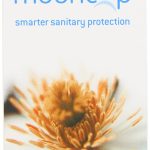The TRUTH about Tampons vs Pads – Which One is Best for You?
It can be confusing trying to decide which is better when it comes to pads vs tampons. Maybe your parents have one opinion, your friends have another and then there is all the marketing thrown at you from the giant companies that make these products to factor into the mix.
What you need are some unbiased facts. Take a look at the pros and cons of each option so you can decide for yourself which is right for you.

The Difference Between Tampons vs Pads
Benefits of Pads
- Easy to use and not invasive. Women simply use the adhesive backing to attach to panties and change every 4 to 6 hours.
- Pads are pretty safe, health-wise. There are fewer risks associated with using pads, although they can cause chafing and dermatitis.
- Women can use pads anytime, even in anticipation of a period, before it starts.
- Pads are safe to wear overnight, unlike tampons which should be removed every 4 to 6 hours.
- Pads can be worn during light flow. Using tampons during light flow leads to excessive drying.
- Pads are widely available; the vast majority of women outside Europe and the US use pads exclusively.
- Using pads vs Tampons means you will not need to insert a foreign object into your vagina, which is taboo in some places, but widely accepted in Europe and the United States.
- Pads make some women feel more secure and protected from leaks.
- Pads give you a visual and sensory queue, so you know when it’s time to change it.
Downside to using Pads
- Pads can cause chafing or dermatitis if the pad is wet and it rubs the skin excessively.
- Pads can be associated with an unpleasant odor, which can be minimized with frequent changing.
- You may feel your flow, or feel wetness, although pad technology has advanced and this issue has been minimized with the modern pad. If you sneeze or cough, you may expel some fluid, but most pads today can quickly absorb the momentary extra flow.
- Slight chance pads will show under clothing, but this is usually unfounded, usually a woman can feel it but no one can tell she is wearing one.
- You can not swim while wearing pads.
- Pads may not be sufficient for women with heavy periods.
Benefits to using Tampons
- You can use a tampon while swimming, there is a chance it may take on water, so change it immediately before and after swimming and carefully tuck the string into your suit so it will not show.
- Tampons hold fluid inside the vagina, so leaks happen less often.
- Tampons do not show under your clothes since they are worn inside.
- Tampons create less waste than pads, some more than others. A tampon with a plastic applicator creates applicator and wrapper waste. There are tampons you insert with your fingers – these create the least amount of waste.
- Less bulky to carry around than pads, although pads have come a long way in the discreetness category.
- Can be useful when managing heavy flow when used together with a pad. Sometimes, especially if a woman has a flow that is so heavy it’s problematic, or even debilitating, a tampon can be a lifesaver.
- May feel cleaner or more dry than wearing pads, as you will not be sitting on a fluid soaked pad.
- Users notice less odor during tampon use while the tampon is inserted. There may be an odor once the tampon is removed. It bears repeating, tampons must be changed every 4 to 6 hours, even if they are not full, because bacteria can grow quickly in the environment they create.
- Some women on online forums say tampons are more comfortable.
Downsides to Using Tampons
- Unless you change your tampon every time you use the restroom, pee and other fluids can get on the string which can potentially introduce bacteria into your vagina.
- Tampons can leak unexpectedly.
- Many women are intimidated by putting something in their vagina, especially young women, virgins, and women who live in areas where the practice is taboo. Some women simply do not like the idea of having something sit inside them.
- Tampons can be uncomfortable, especially for virgins, first time users, and women who have given birth and have changes in the cervix or vagina.
- Tampons can dry you out. Studies show that tampons absorb normal, healthy vaginal mucosa, leading to micro lesions (very tiny cuts).
- Continuous tampon use can cause ulcers in the vaginal wall. Tampon fibers were often found in the lesions. Some women who had these lesions initially assumed the bleeding was breakthrough bleeding, and did not realize a lesion was present until they were examined.
- Although quite rare, tampons can cause Toxic Shock Syndrome and women still die from Tampon Related TSS today. (resource: Bright, R., and J. Cope. “PIN6 TAMPON-RELATED TOXIC SHOCK SYNDROME (TSS) CONTINUES TO PEAK AMONG ADOLESCENT GIRLS: A NATIONWIDE HOSPITAL STUDY.” Value in Health 7.3 (2004): 352.)
Tampons vs Pads – The Verdict
It seems clear that tampons carry more health risks including changing vaginal pH, vaginal flora, creating an environment for infections and causing dryness and micro tears in the vagina walls.
Tampons take maturity to use properly and we would not recommend them for young users unless there was a need, such as they are swimmers, or they have exceptionally heavy periods.
That said, tampons are the most common form of period control in the US. They offer a level of discreetness not found with the pad, and many women are quite satisfied using them.
Pads are the safest option, and usually the least intimidating option for new users. There are less potential risks associated with use, but they are also less discreet.
Overall, which is better, that is not something one woman can fairly answer for another woman. In the battle of tampons vs pads, there are woman who are 100% #teampad and others who are completely #teamtampon and both pads and tampons get the job done, so the one that is better is the one you prefer.
Our Ratings for Tampons Overall 6/10
Our Rating for Pads 7/10














